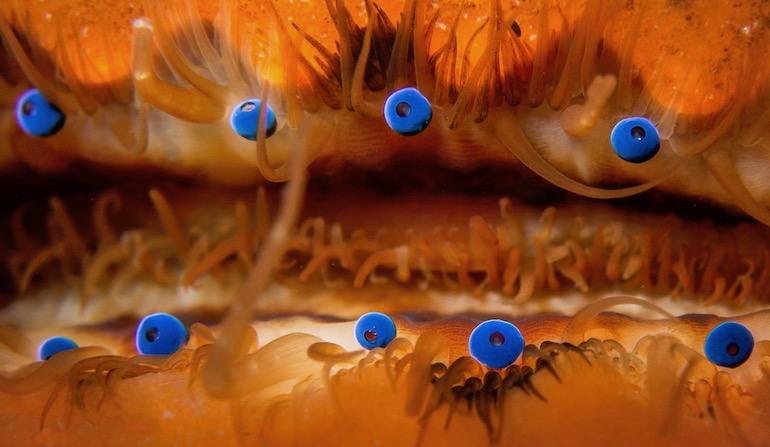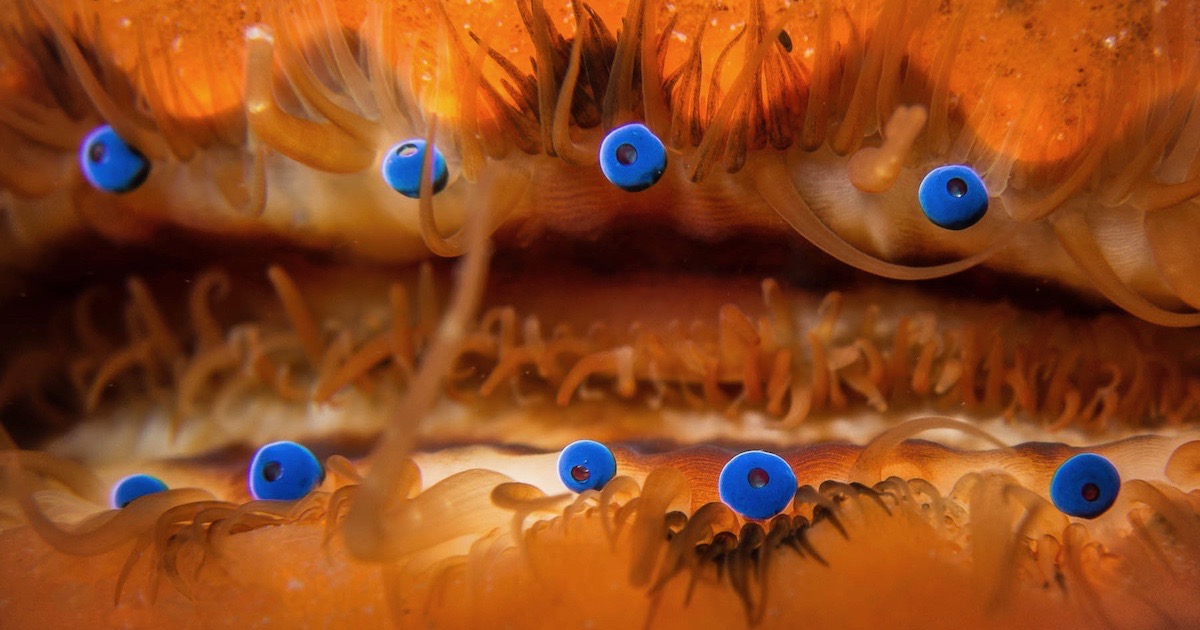 Evolution
Evolution
Can You Say That in Nature? Dobzhansky’s Evolution Cliché Is Becoming Passé


“Nothing in biology makes sense except…” Go ahead; complete that sentence yourself, with a yawn. How many times have evolutionists quoted Dobzhansky’s proverb as if it were the word of the science gods? And yet the maxim is no more than an opinion: 45 years ago, biology “made sense” to Dobzhansky in the light of evolution. Was he some authority who should be blindly accepted forevermore as the final arbiter of science? Every such statement should be questioned. Evolution News questions it, often, but that is a rare thing. Or it was until now.
Michael F. Land thought he could get away with using Dobzhansky’s cliché in his new book about vision, Eyes to See: The Astonishing Variety of Vision in Nature (Oxford University Press, 2018). But Todd Oakley, reviewing the book in Nature, sounds like he has heard that tune once too often.
Land’s organization of ideas often seems forced, as if he has tried to shoehorn research driven mainly by curiosity into synthetic constructs. For example, I found his adaptationist summary unsatisfying. He uses geneticist Theodosius Dobzhansky’s ubiquitous quote — “nothing in biology makes sense except in the light of evolution” — to contend that evolution makes progress when needed. But evolution has not been the main thrust of Land’s research, and a view of it as an optimizing force does little to inform us about how a specific eye works or how a specific brain decodes visual information. [Emphasis added.]
Can You Say That in Nature?
What a refreshing bit of critical thinking! (Or ghastly apostasy, depending on your viewpoint.) Oakley quickly backpedals a bit, but not completely:
Yet the positives of Eyes to See outweigh its negatives. It is enjoyable to get frequent glimpses of Land’s career, which has defined many of the most actively studied topics and organisms in visual ecology today. Ultimately, there is a coherence to the book’s seemingly stochastic journey through the workings of vision, as we proceed from photon to philosophy.
Well, OK. A bit ambiguous, but suggestive. Oakley’s title, “Optical wonderlands: vision science from photons to philosophy,” indicates that he is attuned to ideological intrusions into the science. He may be thinking of Land’s excursions “into the realms of psychology — investigating mental images of colour and depth — and beyond, to philosophical territory such as consciousness.” But his criticism of Land’s “adaptationist summary” soon after, supported by the Dobzhansky quote, may suggest that Oakley is up to his eyeballs in clichés used to gloss over major challenges in evolutionary theory.
A State of Shock
Evolution News cited Todd Oakley years ago. In 2006, he used the concept of remodeling a house as an analogy to explain how different organisms re-use similar genes. “You don’t have to start from scratch,” Oakley said; “you just change certain elements.” In 2014, we found Oakley, a professor at UC Santa Barbara, in a state of shock. After studying vision in squid, he was faced with a huge improbability in his evolutionary beliefs:
The probability of complex organs evolving multiple times with similar trajectories should be vanishingly small, noted Oakley. Yet the team’s novel bioinformatic approaches indicate the evolution of convergent phenotypes is associated with the convergent expression of thousands of genes.
We quoted from Oakley’s paper in PNAS, where he noted his “surprise” three times that such an improbable situation would have occurred. Is Oakley evolving in his tolerance for the kind of “adaptationist summary” encapsulated by Dobzhansky’s maxim?
Jonathan Wells has offered some background on the Dobzhansky cliché. It came from an article in American Biology Teacher in 1973. In that article, the Russian evolutionist distinguished between microevolution and macroevolution, assuming the former blended into the latter. “But there is surprisingly little evidence for the origin of new species, organs, and body plans by unguided natural processes (what Dobzhansky called ‘macroevolution’),” Wells said.
Wells then recounted the frustration on the part of participants who met at a conference in November 2016 at the Royal Society of London. The purpose of the meeting had been to explore new mechanisms for explaining macroevolution, since the majority of participants had doubts about the sufficiency of the neo-Darwinian “adaptationist” position that relied on the sufficiency of natural selection. Their search for an “extended evolutionary synthesis” (EES) failed, Wells says: “They could not explain macroevolution.” In other words, a major aspect of biology did not make sense in the light of evolution.
Gleaming with Delight
Getting back to Todd Oakley’s book review, it may be instructive to note that he gleams with delight at the descriptions of eyes in real, observable organisms. The subtitle reads, “Todd Oakley enjoys a meander through the biology and physics of eyes in organisms from scallops to humans.”
The many eyes of scallops use reflecting mirrors, something like telescopes. Mantis shrimp have 12 classes of colour receptor to our 3. These findings in vision science are just two of many milestones in neurobiologist Michael Land’s meander through topics in the field — from the optical physics of eye function to the neurobiology of how brains interpret optical phenomena.
Oakley continues, relishing Land’s description of the eyes of insects, spiders, crabs, the mantis shrimp, and humans. And he notes that “Even the most sophisticated eyes are of no use without a brain with which to interpret and use the information.” Each of these are design features that need no “light of evolution” to make sense.
Wells might guffaw at one point, where Oakley and Land repeat a fake science story to support evolution:
Opening with his 1960s discovery of scallop eyes’ bizarre reflecting mechanism, Land quickly transitions to the evolution of early eyes. Here, he lucidly encapsulates zoologist Dan-Eric Nilsson’s functional synthesis, which links demands such as efficiency of light capture to optical innovations such as elaborations of cell membranes. These innovations underlie four main stages of eye evolution: non-directional, directional, low-resolution and high-resolution vision.
Wells wrote back in May (“Eyes in a Twinkling?”) that no such “functional synthesis” was performed. Nilsson and Pelger merely produced a set of drawings that assumed evolution, to try to show how eyes might have evolved. No computer model was produced. No test with real biological organisms or their genes was provided. Other evolutionists, like Richard Dawkins, took the fake-news story and ran with it, never checking what had happened.
Aside from that, it is encouraging to find an evolutionist with the nerve to criticize the Dobzhansky cliché, and its adaptationist basis, in the world’s leading science journal. The Free Science website shows that such freedom of thought is long overdue, because “Every day, scientific discovery is held back as questions are stifled by intimidation, academic reprisal, and scientific orthodoxies.”
Photo: Scallop eyes, by Matthew Krummins [CC BY 2.0], via Wikimedia Commons.
